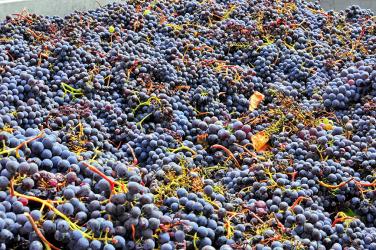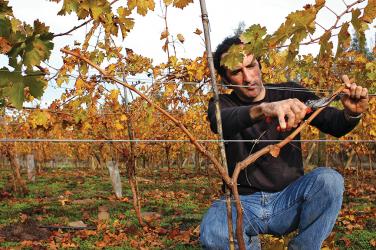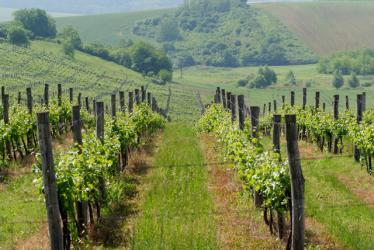There are more than 17 million Americans who claim Italian descent in the United States. Italian cuisine ranks near the top among the over 640,000 restaurants operating in the U.S. Italian dishes have an amazingly broad appeal well beyond the aforementioned Italian-Americans. If the above aren’t enough, another reason that Italian cuisine is so ubiquitous in America is that it pairs so well with wines from all over the world.
Take, for instance, Caesar salad. Normally green salads are difficult to pair with any wine because of the astringency of most lettuce and raw tomatoes, and the tartness of many salad dressings. However, a traditional Italian Caesar salad, with shaved parmigiano cheese, house-made croutons and the Italian olive oil, white-wine vinegar and anchovy dressing that gives the salad a slightly salty and cheesy flavor, works with such white wines as Grüner Veltliner or a citrusy Sauvignon Blanc.
Many people associate Grüner with Austria, but neighboring Hungary makes some exceptional, if less well-known wines, including such fine examples as Count Karolyi Grüner Veltliner, a dry and refreshing white wine that has some spicy, peppery notes that play well off the Caesar’s flavors.
Escarole and White Bean Soup is about as traditional an Italian dish as you will find, a very satisfying blend of bitter escarole and cannellini beans. We’re traveling to Chile for our pairing, and to the red grape Carmenere. Once thought to be a type of Merlot, it actually is from the Cabernet family and was originally cultivated in France’s Bordeaux region. It is, in fact, one of the original six varietals of Bordeaux.
Today, very little Carmenere is grown in France, but in the southern hemisphere the grape is thriving. Chile is the leader in the production of Carmenere wines. Top wineries in Chile’s Colchauga Valley, such as Vina Koyle, are known for making more complex Carmeneres in their Gran Reserva and Royale labels that are often blended with a little Syrah, Tempranillo or Petite Verdot to bring out and complement the grape’s natural red fruit, berry and spice characteristics. Carmenere’s fruitiness and medium body will not overwhelm the somewhat delicate, even a bit earthy, Italian flavors that the dish offers.
While grapes as diverse as Malbec (from Argentina) and Tempranillo (from Spain) are terrific accompaniments to foods like red-sauce pastas, abundant in garlic and often with meats as diverse as rabbit or wild boar, when the sauce is pink (meaning that cream has been added), it changes the complexion of the dish, and the type of wine that will work with it.
Penne Alla Vodka became popular in Italian restaurants in America in the 1980s. This pink-sauce pasta dish is given a slightly sweet cast when Cognac is substituted for the vodka. The Italian in me has to include one Italian wine, and the best choice here is Italy’s workhorse red grape – Sangiovese. It is the most widely planted variety in Italy, and its best expression comes from central Italy, particularly in the Tuscan and Chianti wine regions. Most Chiantis, arguably the most recognized Italian wine worldwide, are usually 100% Sangiovese and have red- and black- fruit aromas and flavors, with medium acidity and a smooth taste.
Chianti is ideal for Penne Borghese, where the cognac, cream and tomatoes are joined by prosciutto, sautéed onions and parsley. One value-priced and delicious option is Vino dei Fratelli Chianti, where the wine’s body, fruit character, acidity and tannic structure bring out all the right flavor notes of the pasta without overwhelming it, or being overwhelmed.
You can travel the wine world and likely find a suitable bottle from almost any wine-producing country that has something to pair with an Italian dish. Or you can stick with the tried-and-true wines the Italians enjoy. Either way, you can’t go wrong.









